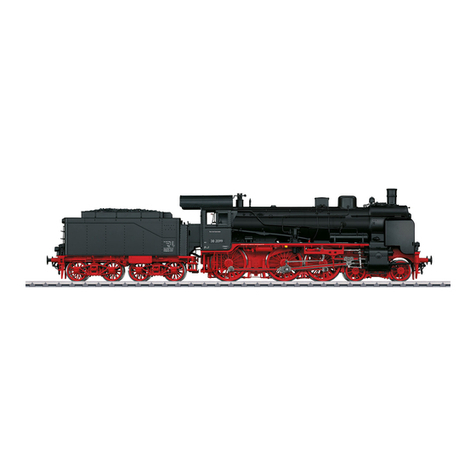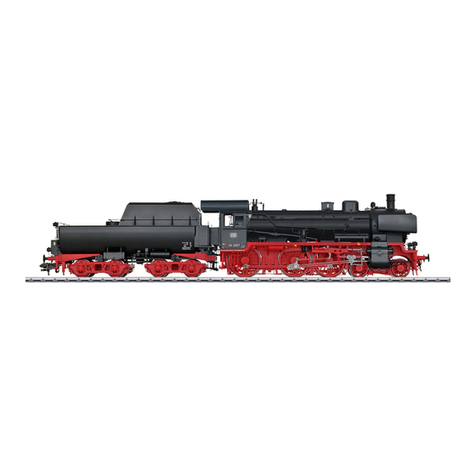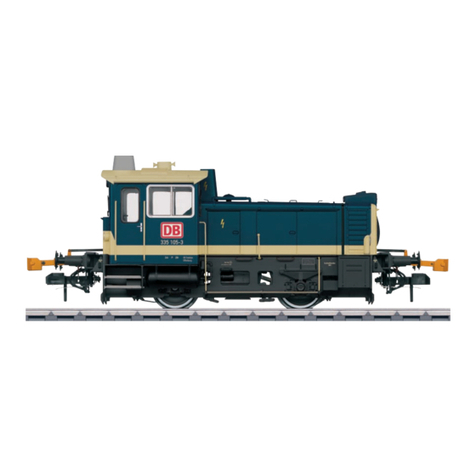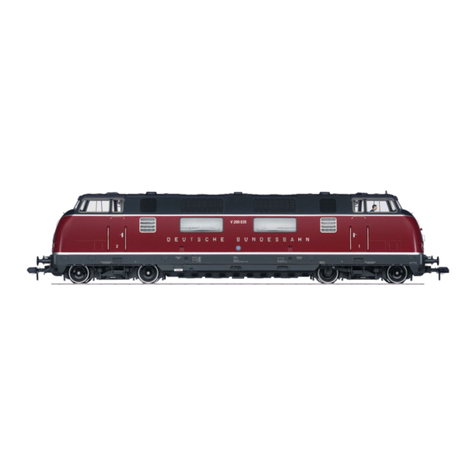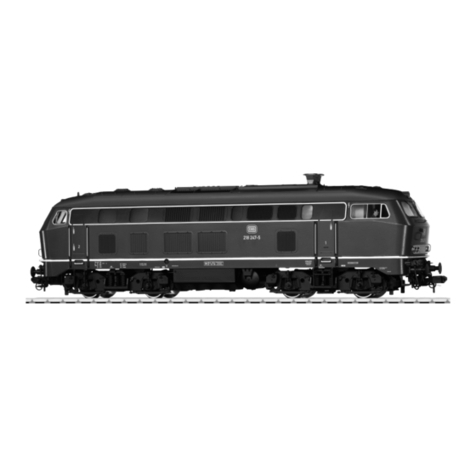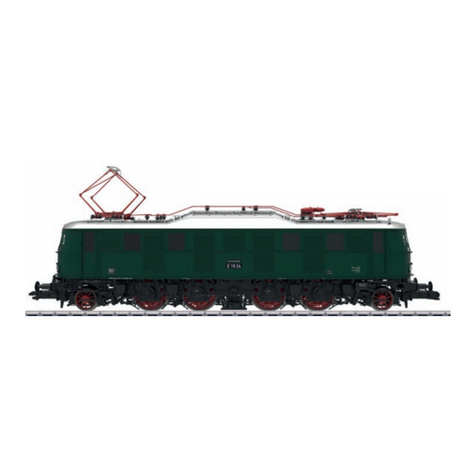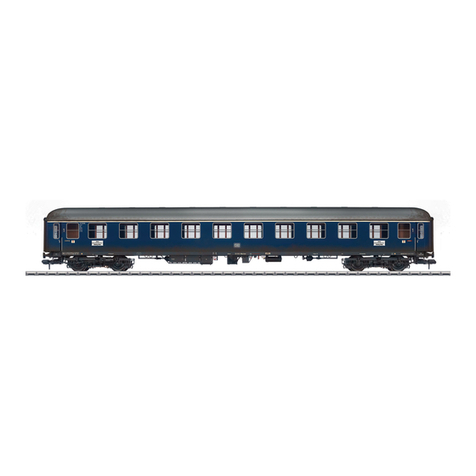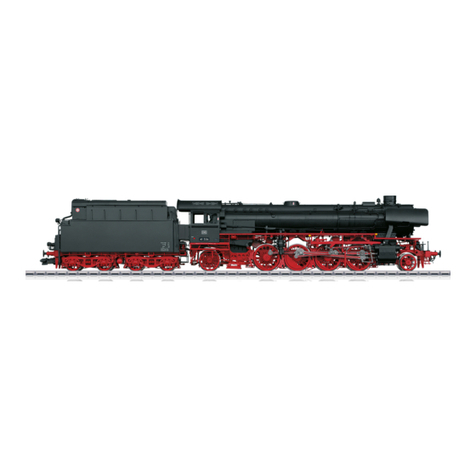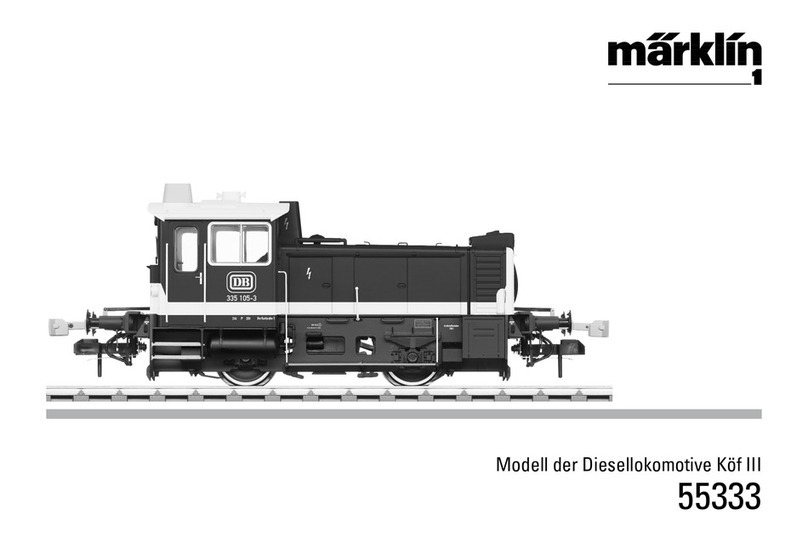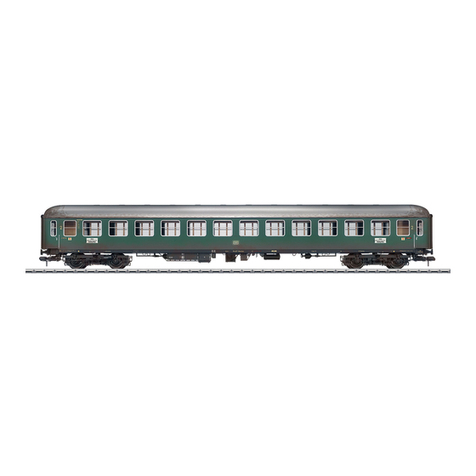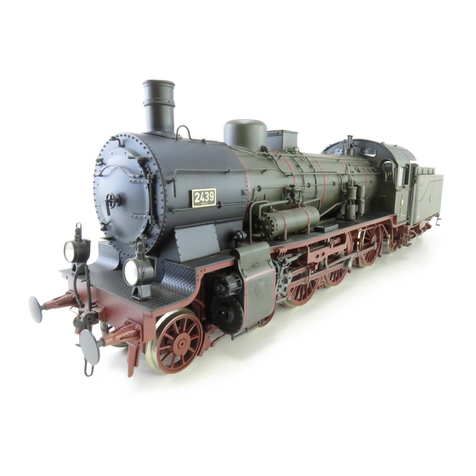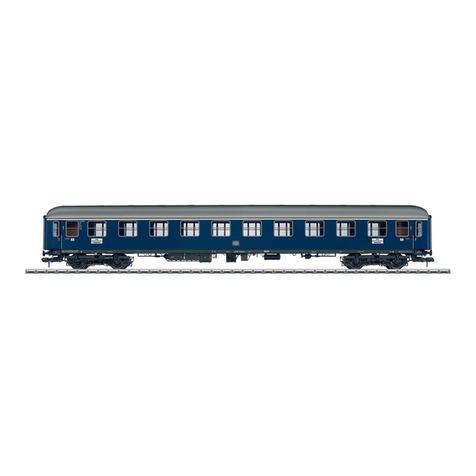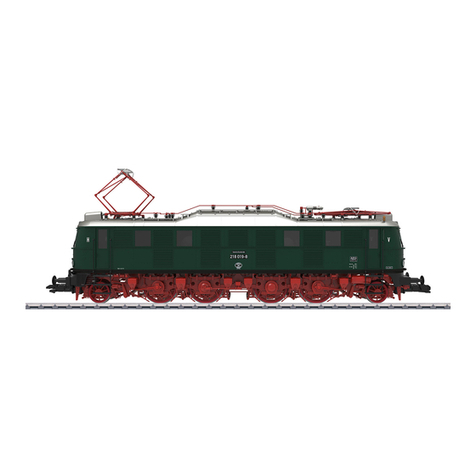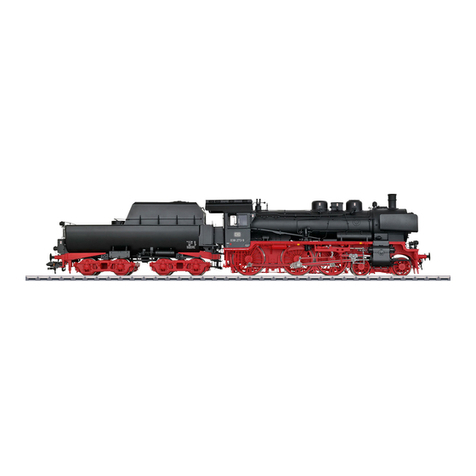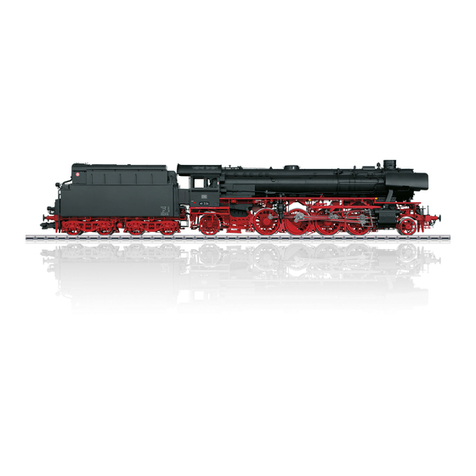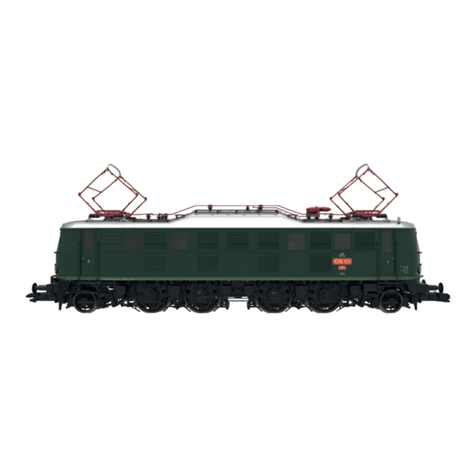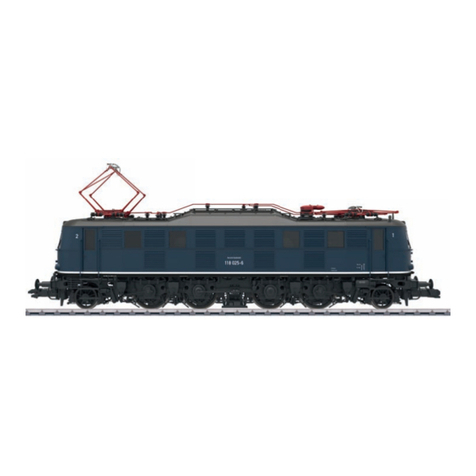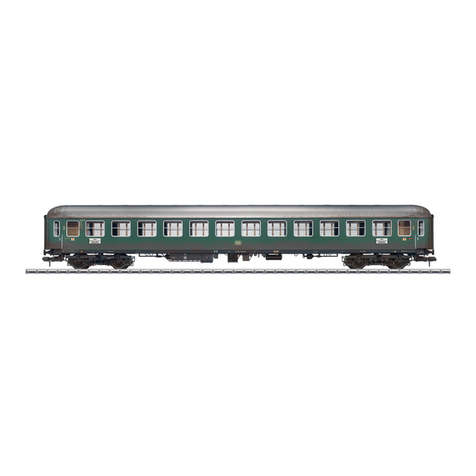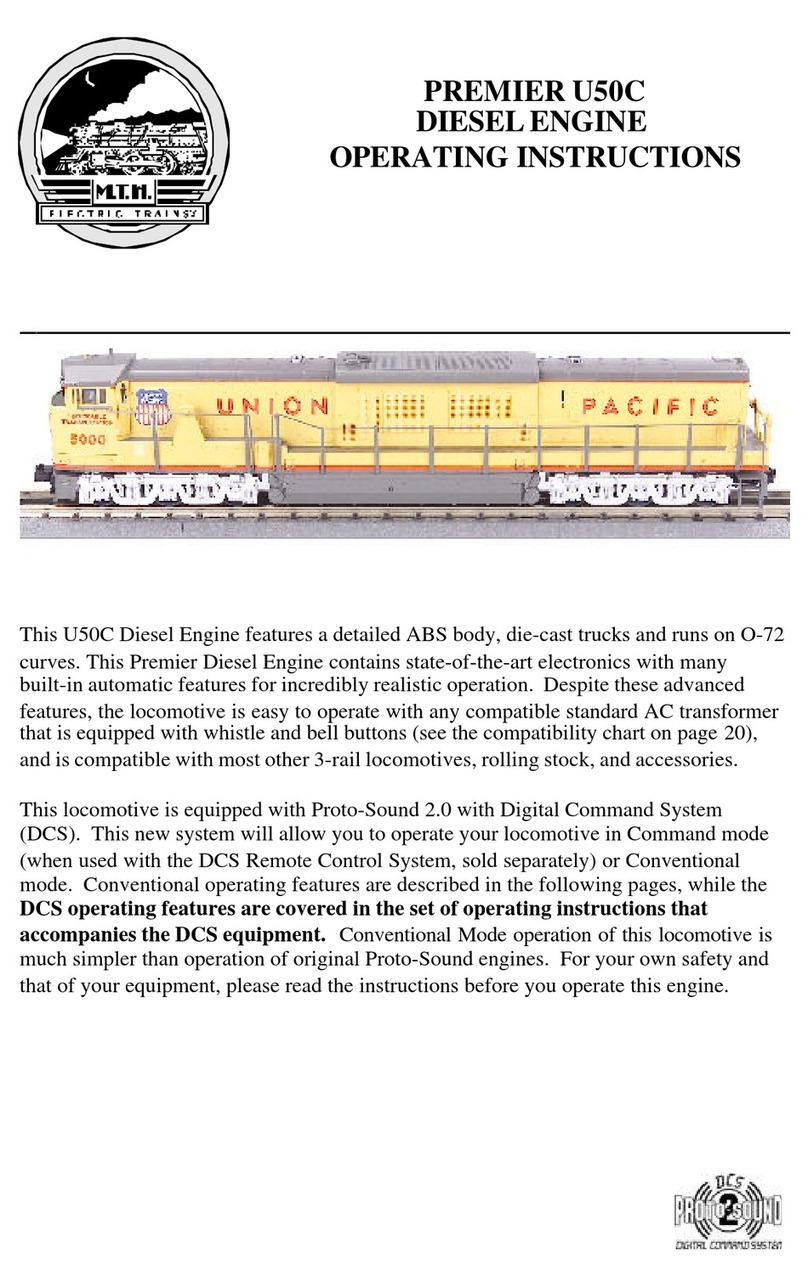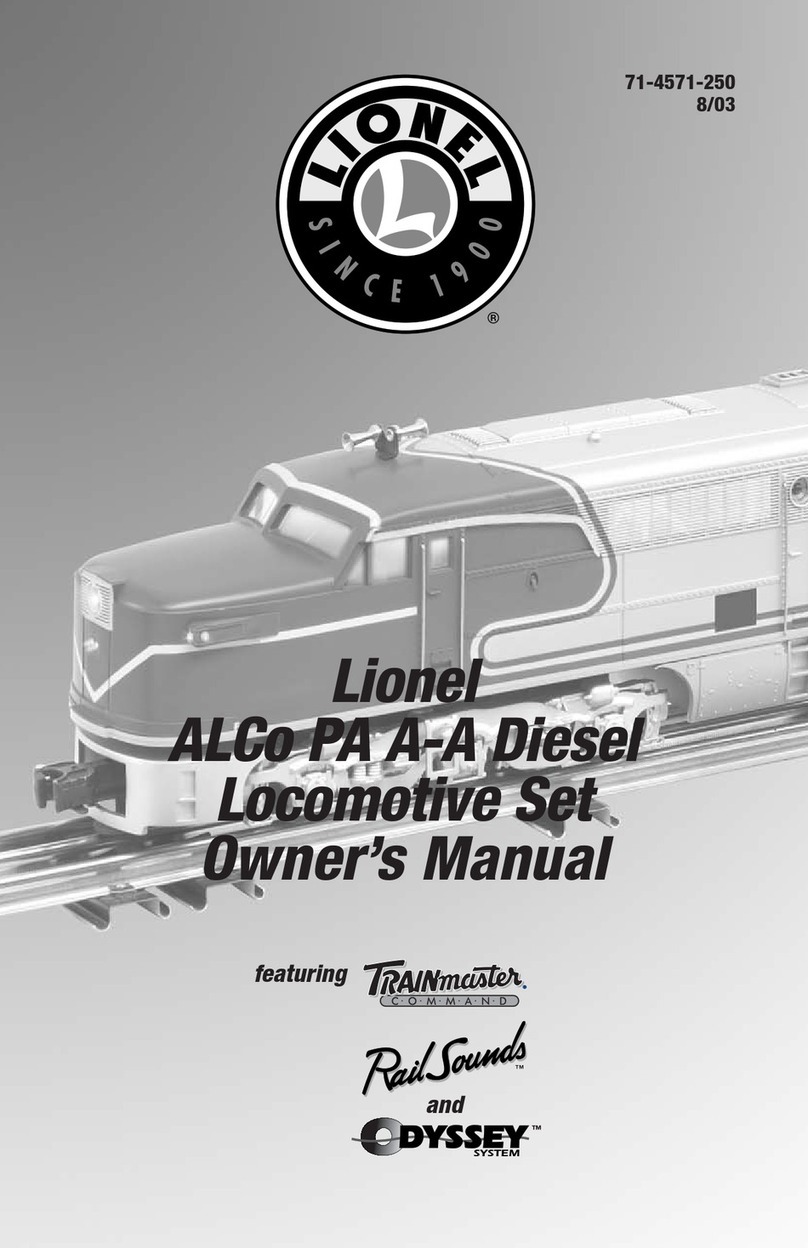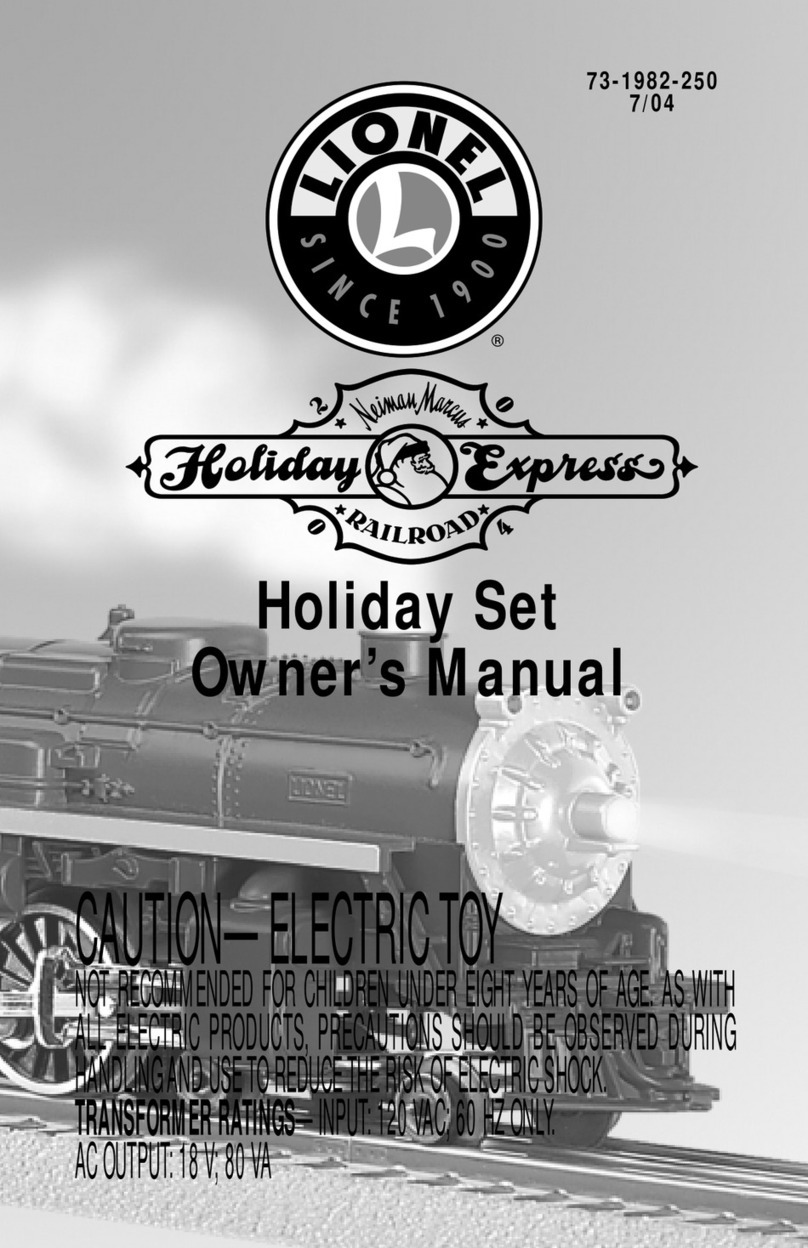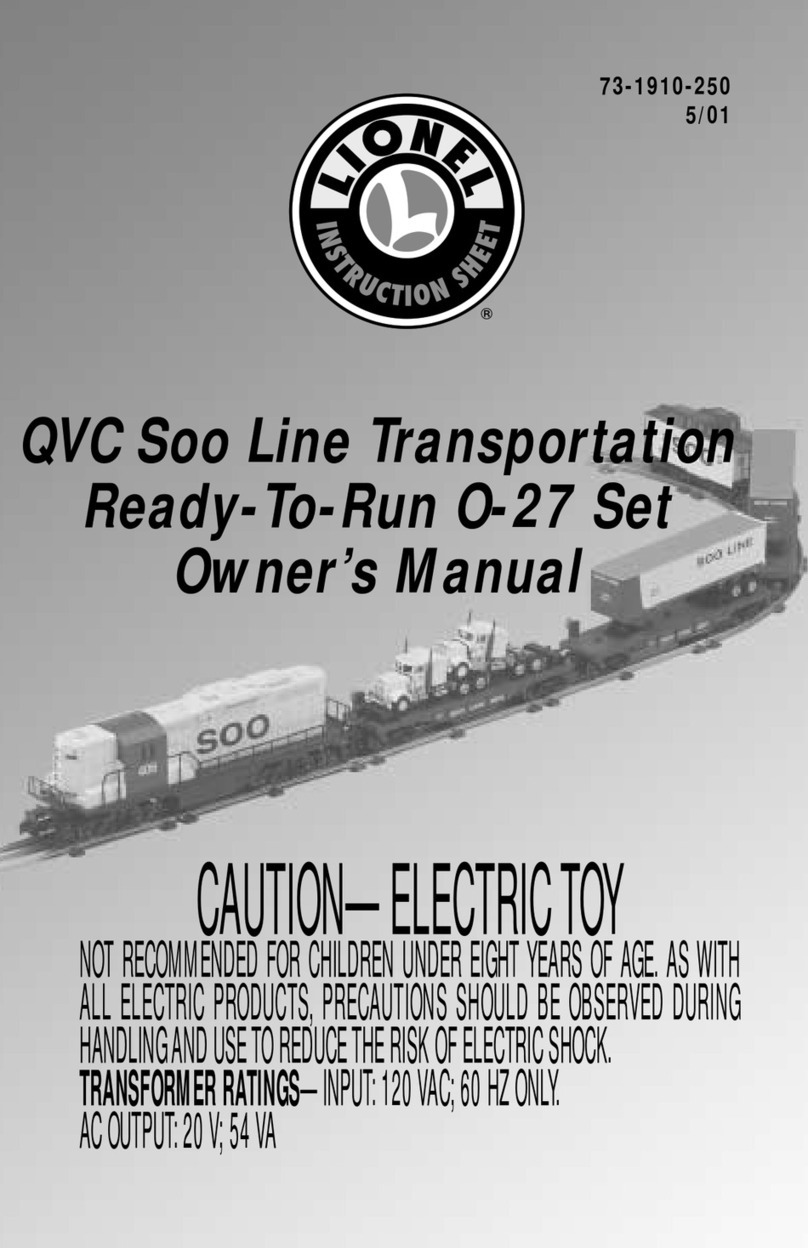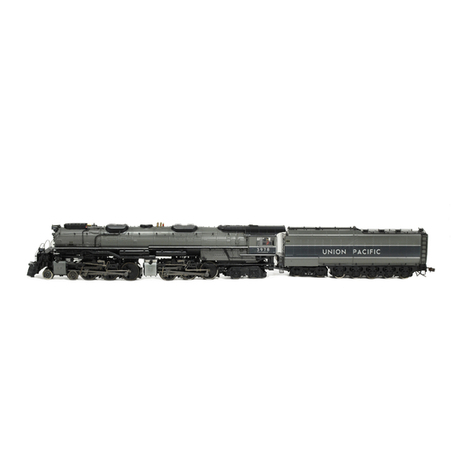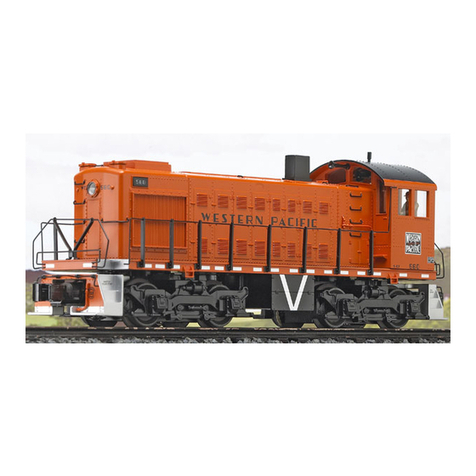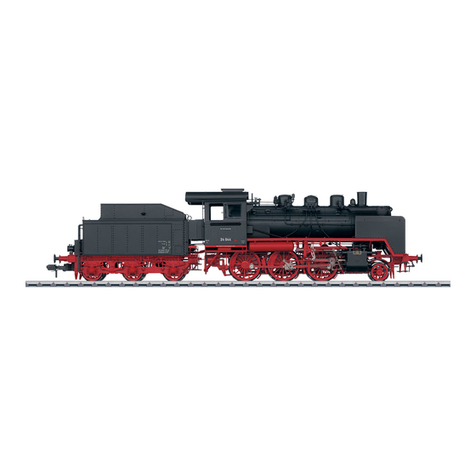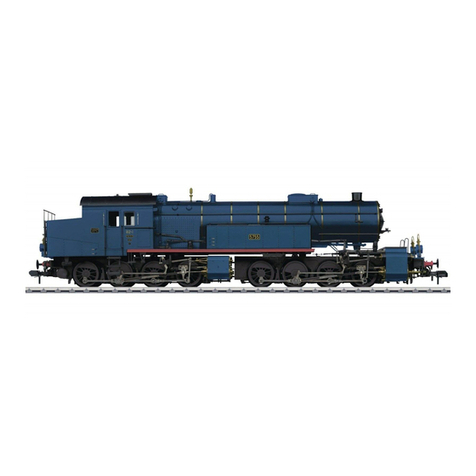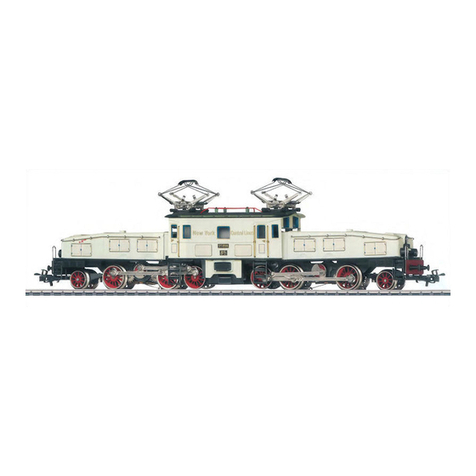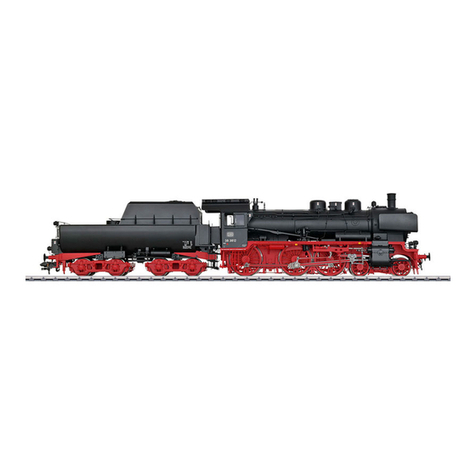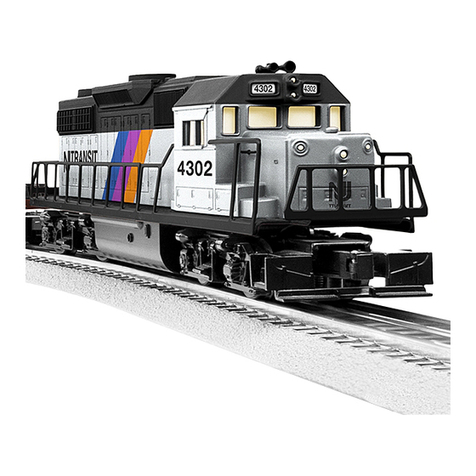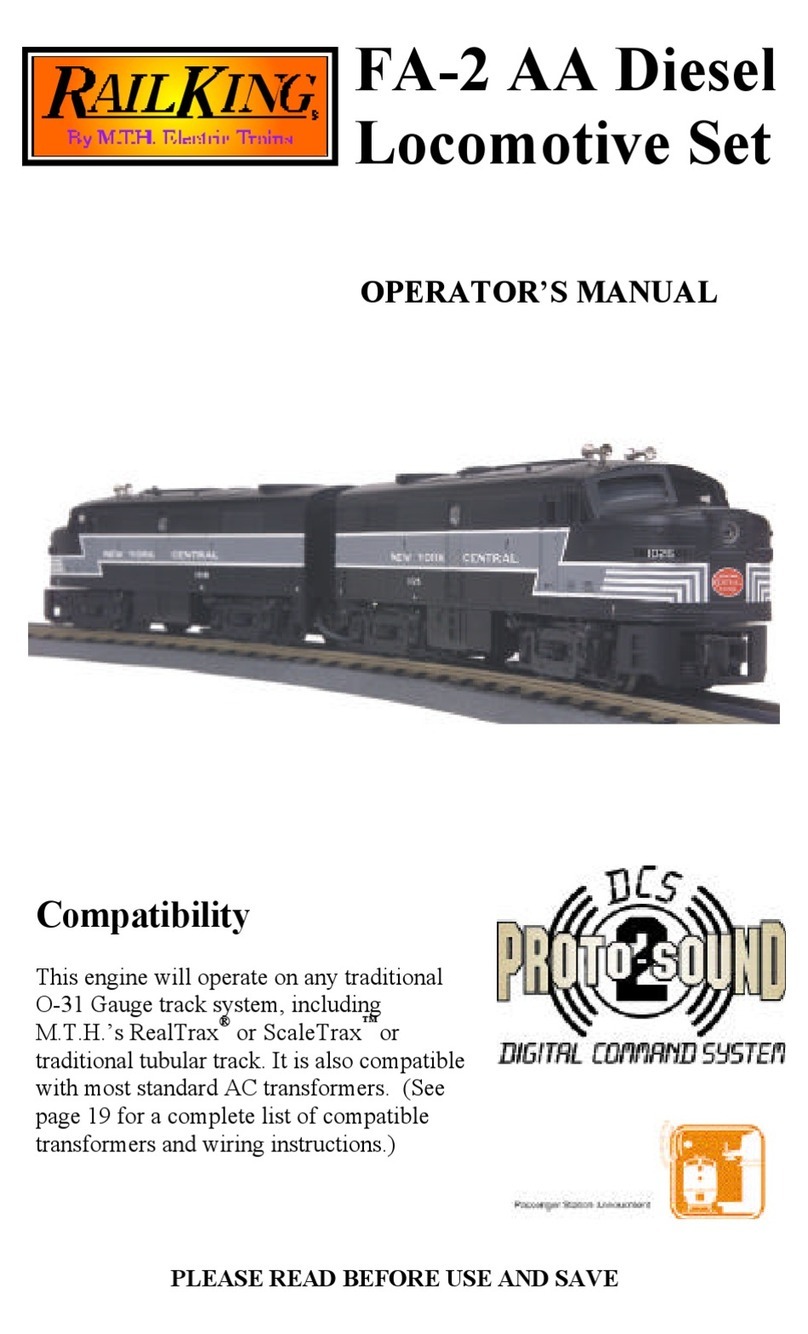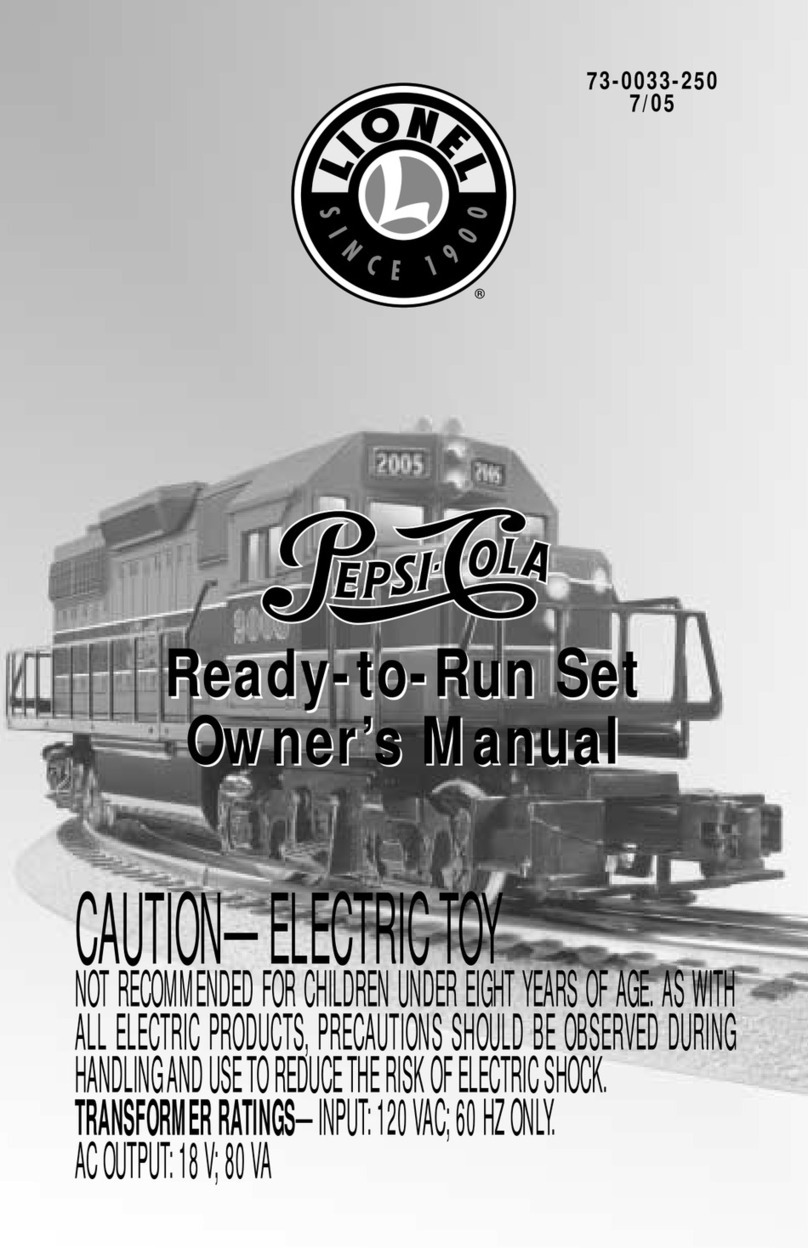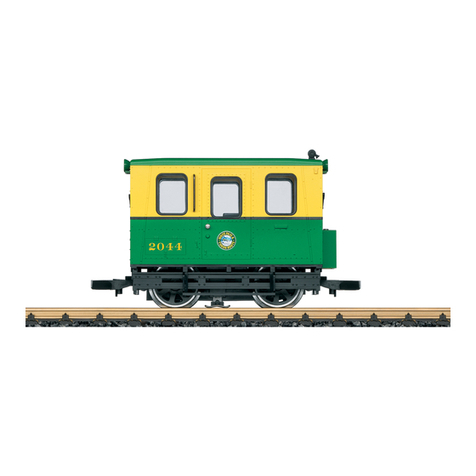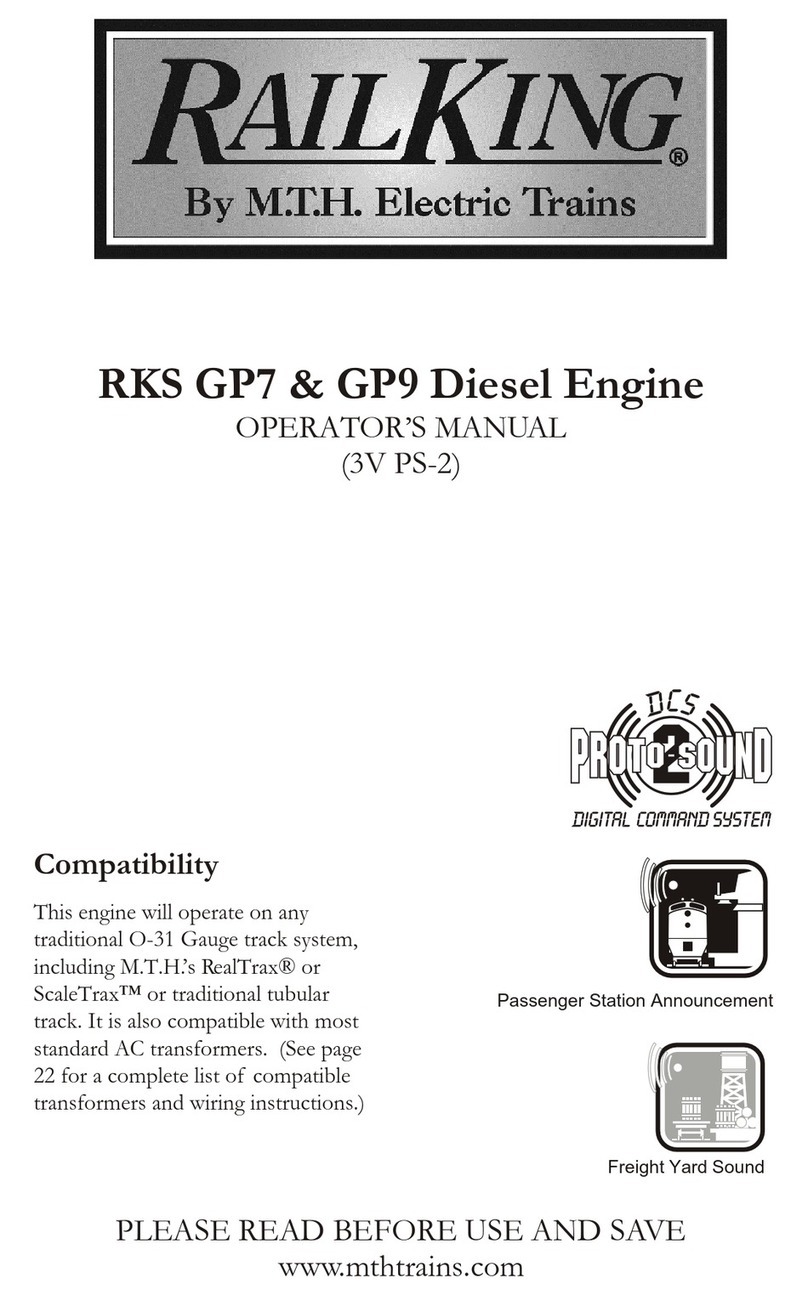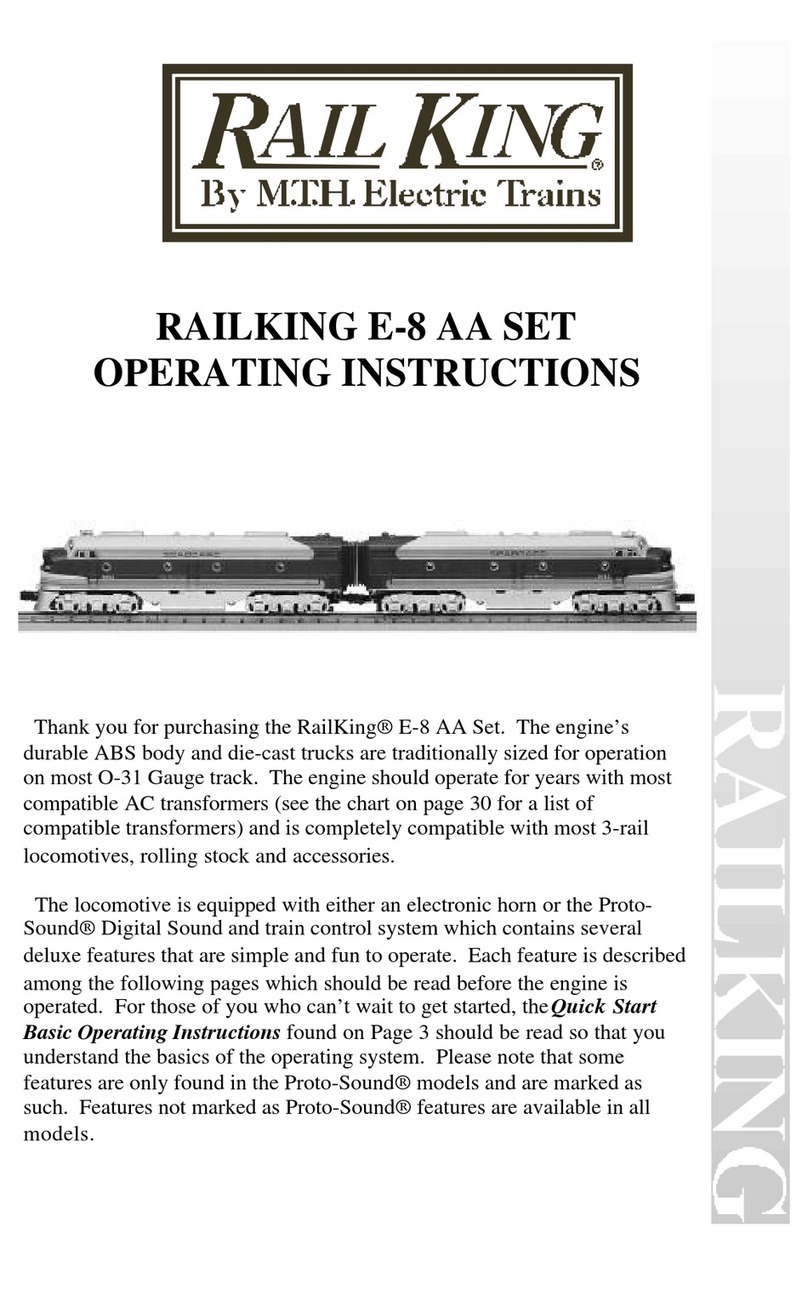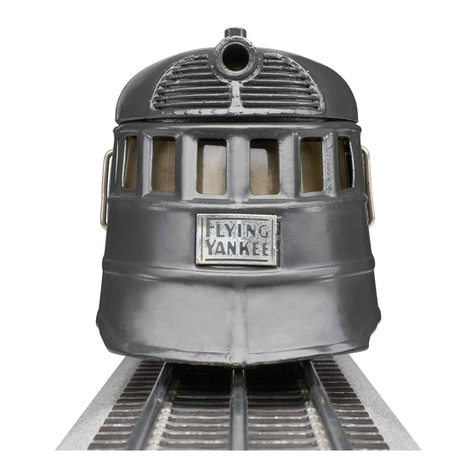
5
Vorbild • Prototype Exploitation dans le réelle • Grootbedrijf
Informations concernant la locomotive réelle
Au début des années 1930, la concurrence croissante des voitures
particulières et des autocars se fit sentir pour la Deutsche Reichsbahn
(DRG), d’où diverses tentatives visant à améliorer le service au client et
rendre le voyage plus attrayant. Pour donner une nouvelle impulsion au
trafic d’excursion, deux automotrices panoramiques électriques – qui
plus tard devaient compter parmi les engins de prestige de la DRG sous
le nom de « trains de verre » - furent commandées à l’usine de wagons
allemande Fuchs et à la firme AEG. Pour assurer le trafic d’excursion
dans les Alpes bavaroises et autrichiennes au paysage particulièrement
attrayant, ces véhicules devaient satisfaire à des exigences bien spé-
cifiques : les voyageurs devaient, de leur siège, avoir une vue dégagée
sur le paysage de tous les côtés. A cet effet, la conception des fenêtres
et du toit devait incorporer le moins d’éléments opaques possible.
De grandes baies sur les faces frontales et sur les pans du toit offraient
une belle vue panoramique. La caisse de la voiture, entièrement
soudée à partir de profilés et de tôle, ne présentait qu‘un seul accès
central de chaque côté. Pour dégager la vue, l’espace toilette, situé
à proximité de l’accès central, fut abaissé quasiment à hauteur du
bord inférieur de la fenêtre. Les accoudoirs des banquettes étaient
rabattables. Deux moteurs suspendus par le nez entraînaient les deux
essieux du bogie moteur, le second bogie n’étant pas motorisé.
Du 14 juillet au 13 octobre 1935, l’elT 1998 (future ET 91 01) – dont la
partie électrique n’était pas tout à fait terminée – fut présentée à
l’exposition de Nuremberg célébrant le 100e anniversaire des chemins
de fer allemands. La seconde automotrice elT 1999 (future ET 91 02)
avait pu être livrée dès septembre 1935 et participa à la grande parade
des véhicules organisée à l’occasion du 100e anniversaire. Les deux
automotrices circulèrent ensuite à partir de Munich en trafic spécial
sur les lignes électrifiées du sud de l’Allemagne, puis bientôt jusqu’en
Autriche. A l’époque, tout comme après la seconde guerre mondiale,
les voyages à thème « Tour des Karwendel » ou « Grand Tour des Alpes
» remportaient un franc succès.
Informatie van het voorbeeld
Begin jaren 30 ondervond de Deutsche Reichsbahn (DRG) de toene-
mende concurrentie van vrachtauto‘s en autobussen. Daarom waren
er verschillende pogingen om de dienst voor de klant te verbeteren
en het reizen aantrekkelijker vorm te geven. Om bij uitstapjes nieuwe
impulsen te bieden, werden bij de Waggonfabrik Fuchs en bij de AEG
twee elektrische panoramawagens besteld die later als „Glazen
treinen“ tot de demonstratieobjecten van de DRG moesten behoren.
Deze voertuigen moesten voor het tourverkeer door de landschappelijk
bijzonder aantrekkelijke Beierse en Oostenrijkse Alpen aan speciale
eisen voldoen: zo moesten de reizigers vanaf hun zitplaats ongehinderd
naar alle kanten het landschap kunnen bekijken. Daarom moesten in
het raam- en dakgedeelte zo min mogelijk ondoorzichtige onderdelen
gebruikt worden.
Grote ramen aan de uiteinden en in de schuine kanten van het dak
maakten een uitstekend uitzicht rondom mogelijk. De volledig van
profielen en metaal gelaste wagenkast bevatte aan elke voertuig-
zijde slechts één middeninstap. Om een vrij uitzicht te hebben, werd
de toiletruimte bij de middeninstap vrijwel tot aan de onderkant van
de vensters verlaagd. De leuningen van de banken konden worden
omgeklapt. Twee taatslagermotoren dreven de beide assen in het
motordraaistel aan, het tweede draaistel bleef zonder aandrijving.
Van 14 juli tot 13 oktober 1935 werden de elektrisch nog niet geheel vol-
tooide elT 1998 (later ET 91 01) op de Neurenberger tentoonstelling „100
jaar spoorwegen in Duitsland“ gepresenteerd. De tweede motorwagen
elT 1999 (later ET 91 02) kon in september 1935 worden afgenomen en
nam deel aan de grote voertuigparade bij het honderdjarige jubileum.
Vervolgens reden beide motorwagens in speciaal treinverkeer op
de geëlektrificeerde trajecten van zuid Duitsland en al snel ook naar
Oostenrijk. Geliefde mogelijkheden waren toen en ook na de tweede
wereldoorlog de „Karwendelrondrit“ en de „Grote Alpenrondrit“.
